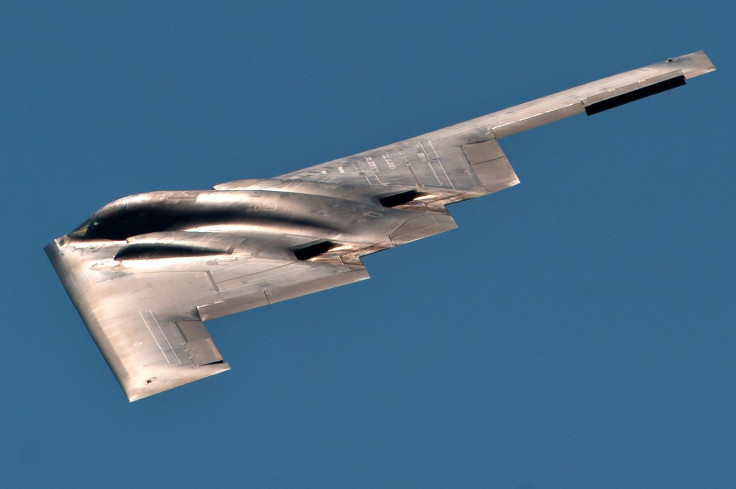Syria Strike: How The US Might Bomb Targets In The Country

This story has been updated to reflect developments on the ground since it originally appeared on August 26.
As the week draws to a close without a strike on Syria by U.S. or allied forces to punish the Syrian regime for the use of chemical weapons, which are banned by the international community, Western forces remain poised to attack if the order comes.
Statements on Friday from Secretary of State John and President Barack Obama did not shed light on the imminence of an attack. Kerry had said Monday that Obama was considering “a response to the use of chemical weapons” and “has made clear to the Assad regime that [the international prohibition to use chemical weapons] cannot be violated without consequences.”
The U.S. has been supplying Syrian rebels with nonlethal military equipment for months, but had until this week given no indication that it was considering direct armed intervention in a conflict that has killed more than 100,000 and threatens to further inflame the Middle East.
Last week's chemical weapons attack in the Damascus suburb of Ghouta, where the suspected use of nerve agents by pro-Assad forces may have killed 3,000 people, mostly civilians, turned the tide in Washington and has led to a sudden buildup of forces around Syria.
Earlier this week, airline pilots flying into and out of the Eastern Mediterranean island of Cyprus told the Guardian they've seen C-130 transport planes at the Royal Air Force base at Akrotiri, as well as small formations of fighter jets on their radar screens, which they believe had flown from Europe to the airbase, a British Overseas Territory just 100 miles (160 km) from the Syrian coast. Residents near the airfield say they've seen much higher than normal activity at the base.
The UK Ministry of Defence said in a statement on Thursday that six Typhoon fighter jets were deploying to Akrotiri. The statement specified that it was "a precautionary measure" and "a movement of defensive assets operating in an air-to-air role only. They are not deploying to take part in any military action against Syria."
The U.S. Navy has ordered an additional missile-armed warship in the area, and at least one aircraft carrier is close enough to Syria to launch its aircraft against Assad forces.
The C-130s seen at Akrotiri might have been American, British or Italian airplanes ferrying supplies, including bombs and missiles, from any of the three European airbases where the U.S. Air Force keeps fighter and bomber aircraft: Lakenheath in England, Spangdahlem in Germany and Aviano in Italy.
The fighter planes reportedly seen on radar may have been American jets repositioning to the Cyprus base, barely 20 minutes' flying time from Damascus. Among the assets that U.S. commanders can move to Akrotiri from Europe quickly, there are F-15 Eagle and F-16 Fighting Falcon fighter-bombers that can hit both ground and air targets. KC-135 flying tankers from the Mildenhall airbase in England could also be deployed for in-flight refueling, while helicopters and Special Operations aircraft would also likely deploy to Akrotiri to rescue any downed pilots.
If the 2011 NATO campaign against Libya is any guide, a first U.S. strike could also come from Missouri-based B-2 stealth bombers, whose invisibility to radar could help them penetrate unseen Syria's considerable air defenses after a long flight from the continental U.S.
One advantage of using B-2 bombers is that they can be armed with huge bunker-buster bombs able to penetrate thick reinforced concrete. That would also serve as a test of their possible future use against Iranian nuclear sites.
Some experts, however, point out that Syria has a dense, advanced network of Russian-made radars and anti-aircraft missiles, which would discourage any first strike using airplanes. According to this scenario, the U.S. would use cruise missiles launched from ships to hit Syria instead.
A senior Defense Department official told CNN on Monday that four U.S. Navy destroyers "maintain readiness and, if required, could execute a mission within hours" of being ordered to do so.
According to naval defense website Navyrecognition.com, the U.S. Navy has four surface ships in the Mediterranean, all able to fire Tomahawk cruise missiles. Several sources report that these are four destroyers: the USS Mahan, which was scheduled to return to the States but was ordered last week to remain in the region, as well as the USS Gravely, USS Barry and USS Ramage. Each destroyer can launch up to 90 missiles, including the BGM-109 Tomahawk, a precision weapon that can hit with pinpoint accuracy at distances up to 1,000 miles (1,700 km).
The aircraft carrier USS Truman is no longer in the Mediterranean -- it left on Aug. 18 via the Suez Canal -- but its F-18 Hornet fighter-bombers are still close enough to reach Syria over Egyptian, Israeli or Jordanian airspace, adding another option to the array of possibilities likely being considered by Obama.
As for what American bombs and missiles would hit in Syria, it's unlikely that targets in a first strike would include suspected chemical weapons stockpiles. Destroying them would pose the risk of dispersing the chemical agents in the atmosphere, and the regime would probably not keep them in a previously known location. It's therefore much more likely that a U.S. first strike would hit command and control infrastructures, such as military headquarters and barracks, communications sites, as well as radar and antiaircraft missile sites. Striking those targets would make it harder for the Syrian armed forces and the government to coordinate military action -- and that would include any further use of chemical weapons.
© Copyright IBTimes 2024. All rights reserved.






















